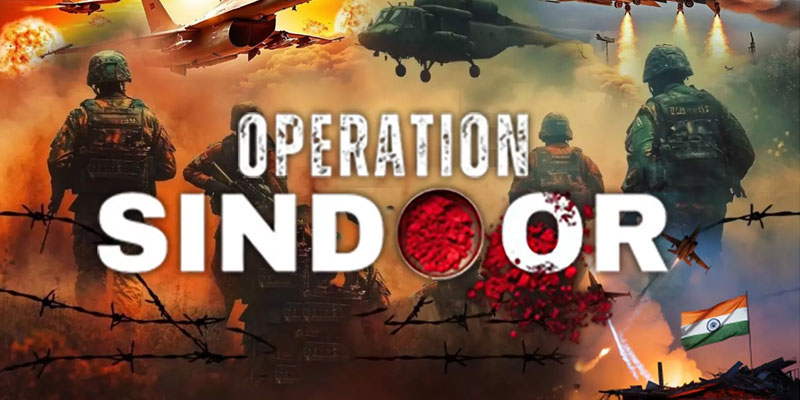A Perfect Military Response with Strategic Restraint
Operation Sindoor, launched in response to the brutal Pahalgam terror attack on April 22 that killed 26 civilians, was a calculated, precision military operation by India targeting Pakistan-backed terror infrastructure. Despite early setbacks, the operation eventually demonstrated India’s military resolve, tactical adaptability, and adherence to strategic restraint under civilian leadership — a clear contrast to Pakistan's military-driven statecraft.
The Early Constraint and Jet Losses
At a seminar in Jakarta on June 10, Indian Navy Captain Shiv Kumar, serving as the defence attaché to Indonesia, disclosed that India lost some fighter jets during the initial phase of the operation. These losses, he said, were not due to enemy superiority but stemmed from a political directive restricting Indian forces from targeting Pakistani military installations or air defence systems.
“We did lose some aircraft and that happened only because of the constraint given by the political leadership to not attack the military establishment or their air defence system,” Kumar stated. This political restraint was meant to avoid escalating the conflict beyond a targeted counter-terrorism mission.
Tactical Shift After Initial Losses
Following the early losses, India promptly revised its strategy. According to Captain Kumar, once it became clear that avoiding military targets left Indian jets vulnerable, the Indian Air Force (IAF) recalibrated its approach. A focused campaign was then launched to first suppress (SEAD) and destroy (DEAD) Pakistan’s air defence capabilities. With these threats neutralized, Indian forces began deploying surface-to-air and BrahMos surface-to-surface missiles with greater impact and precision.
“On May 8, 9, and 10, there was complete air superiority by India,” Kumar stated, signifying a decisive turning point in the operation.
Media Controversy and Government Clarification
Despite the military insights provided by Kumar, his comments sparked controversy. Media outlets reported that five Indian aircraft — including Rafales, a MiG-29, a Sukhoi-30, and a tactical drone — were lost in the opening phase of Operation Sindoor. This led to significant debate and speculation.
In response, the Indian Embassy in Jakarta clarified that Kumar’s remarks were “misrepresented” and “taken out of context.” The embassy emphasized that India’s armed forces act strictly under the direction of civilian political leadership, unlike Pakistan’s military, which often operates autonomously and uses terrorism as a state policy tool.
The Ministry of Defence declined to comment directly, but the embassy reiterated that the objective of Operation Sindoor was to neutralize terrorist threats — not to escalate into a full-scale war.
Echoes from the Top: CDS Chauhan’s Take
Captain Kumar’s remarks align with earlier statements by India’s Chief of Defence Staff, General Anil Chauhan, who on May 31 acknowledged that India had lost jets on May 7 due to tactical errors. He asserted that these mistakes were quickly rectified and that the Indian Air Force returned with greater force and operational clarity to execute deep, precision strikes inside Pakistan.
A Mission of Precision and Principle
Operation Sindoor will likely be remembered as a military campaign that balanced power with principle. While initial political constraints may have led to early losses, they underscored India’s commitment to proportional response and adherence to international norms. The swift tactical adaptation and eventual air dominance achieved by Indian forces not only reversed the early setbacks but also sent a clear message: India will respond decisively to terrorism, but always under the control of a responsible, civilian-led democracy.
(With agency inputs)






















